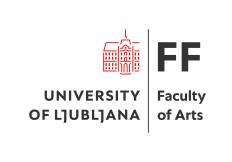Formation of an early modern regional artistic centre: the case of Ljubljana
Principal Investigator at ZRC SAZU
Helena Seražin, PhD-
Original Title
Oblikovanje regionalnega umetnostnega središča v zgodnjem novem veku: primer Ljubljane
Project Team
Tina Košak, PhD, Asst. Prof. Dr. Renata Novak Klemenčič, Asst. Prof. Dr. Marko Štuhec-
Project ID
J6-50205
-
Duration
1 October 2023–30 September 2026 -
Lead Partner
-
Project Leader
-
Financial Source
Slovenian Research and Innovation Agency

Partners
ZRC SAZU

The project aims to develop a methodological framework for researching regional artistic centres, and to present a model study of an early modern town. With its location at the junction of cultures and at the crossroads of trade routes, Ljubljana as the capital of the Habsburg province of Carniola serves as an excellent sample case. The project draws from the notion of a regional artistic centre as a town inhabited by artists and artisans whose commissions and oeuvres extend beyond the mother province. The artistic impact of such an art centre is significantly smaller from the large art capitals (such as Venice, Rome, Antwerp etc.), which have been, in contrast to smaller provincial regions, such as Ljubljana, subject to extensive and versatile target scholarship.
The main objective is thus to comprehensively study the circumstances and levers that contributed to transformation of Ljubljana into a regional artistic centre. Further objectives are 1. In-depth research into the changing area of influence of Ljubljana as an artistic centre, based on comparative study of commissions and artists’ oeuvres. 2. A list of migrating artists, their itineraries, and the circumstances of their immigration. 3. To comparatively analyse the patronage and collecting practices in and outside Ljubljana, with a special emphasis on geography as well as demographic and social contexts. North Italian architects, Netherlandish painters and their clients in Ljubljana, and stonemasons from Gorizia will be subject to case studies, with a special emphasis on demographic, social and geographical aspects.